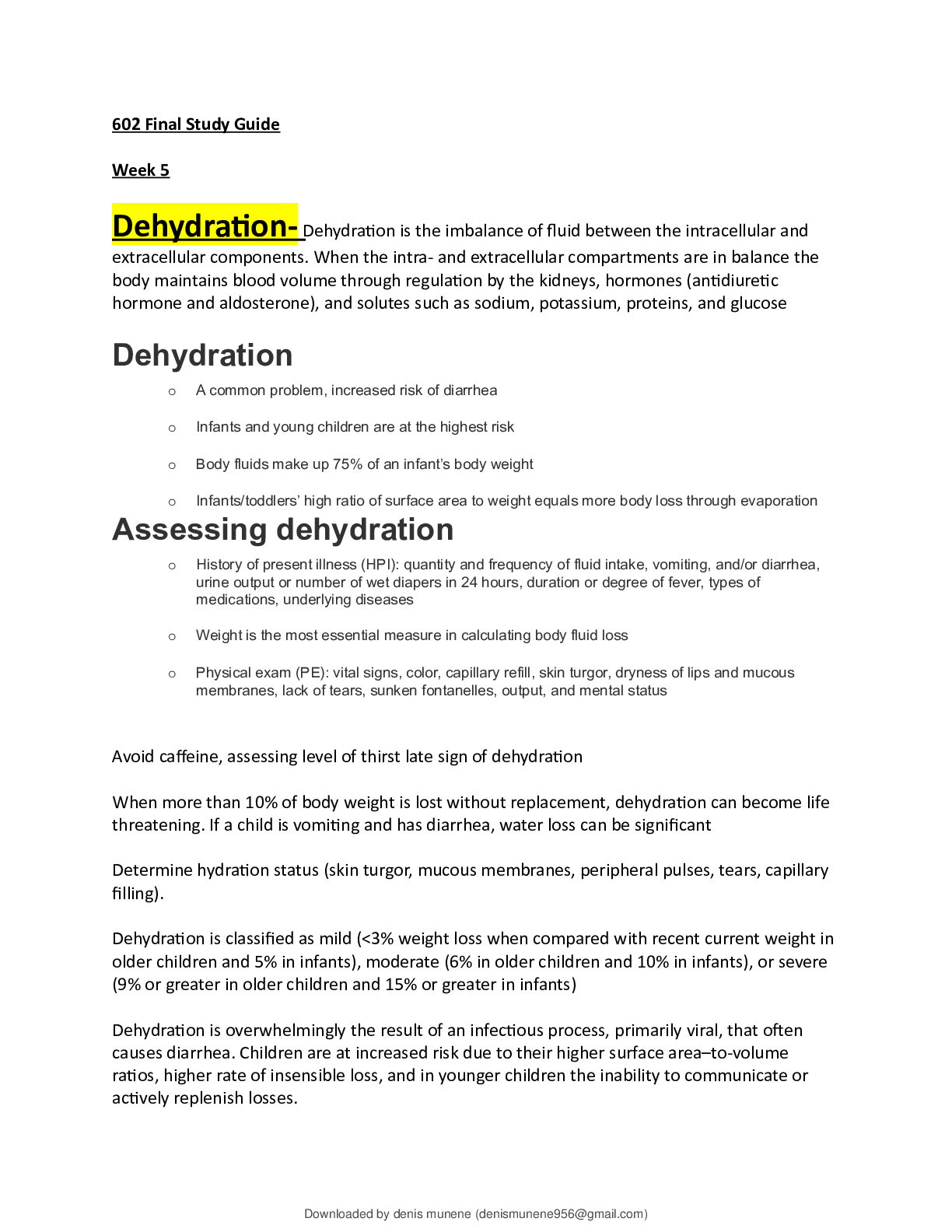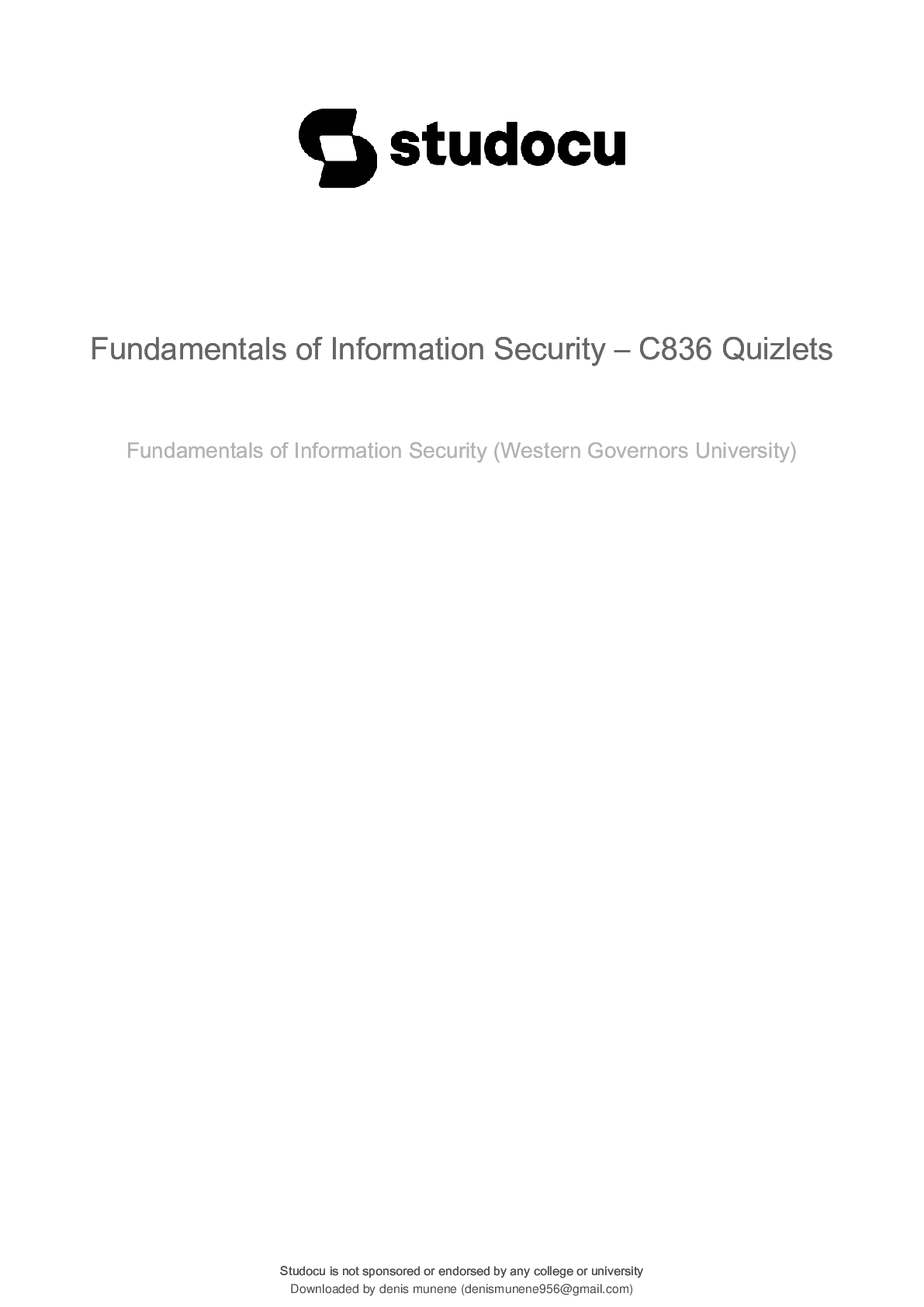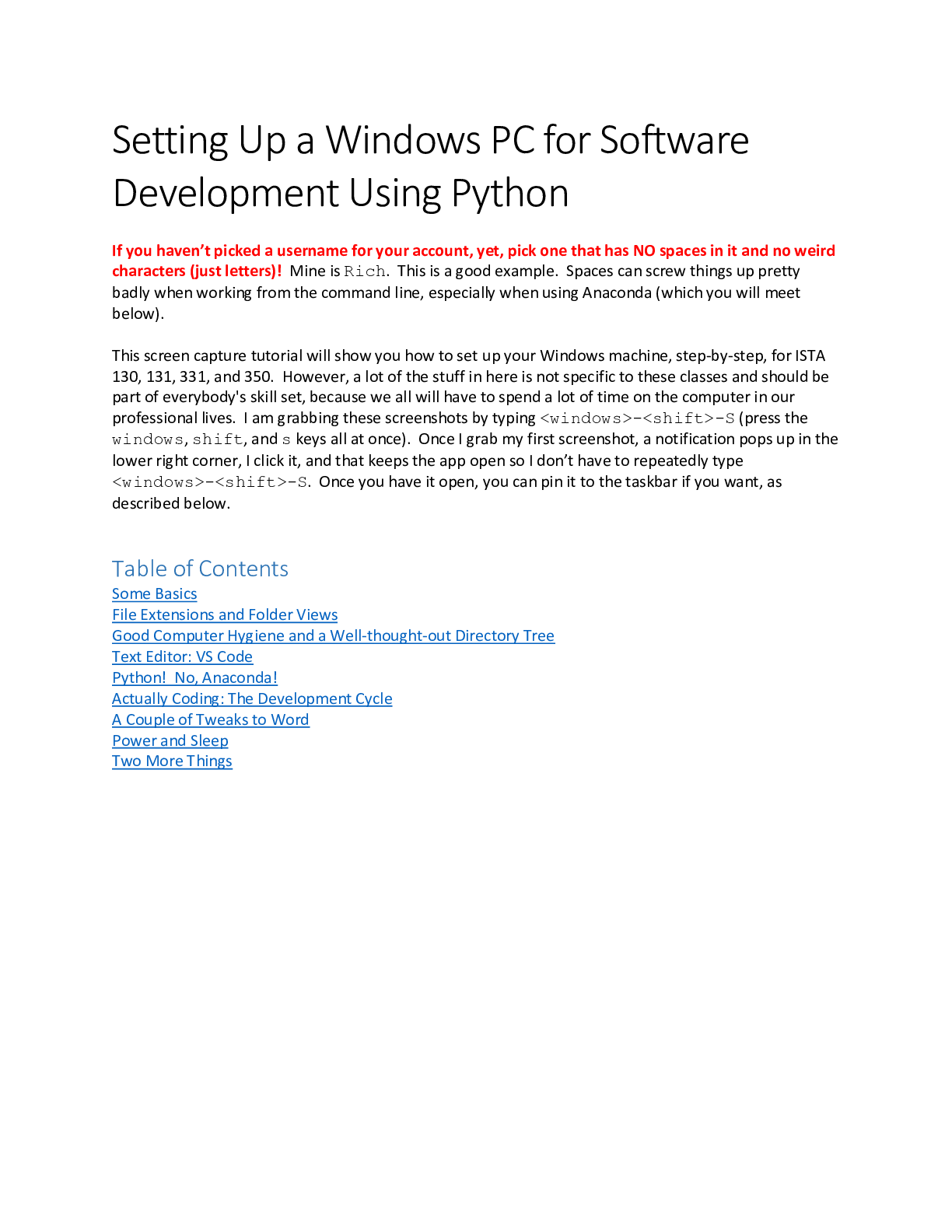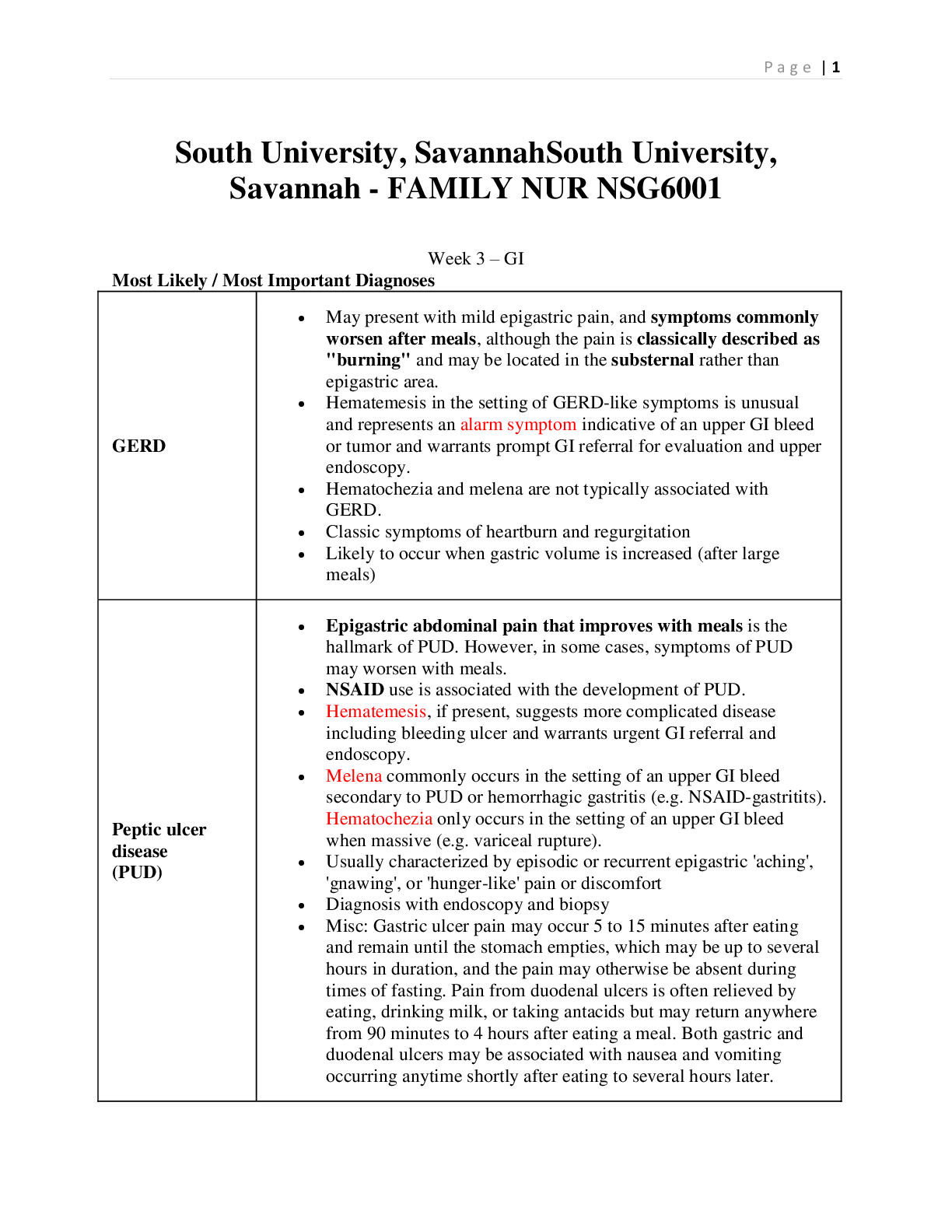Health Care > Class Notes > 602 Final Study Guide (All)
602 Final Study Guide
Document Content and Description Below
de Week 5 Dehydration- Dehydration is the imbalance of fluid between the intracellular and extracellular components. When the intra- and extracellular compartments are in balance the body maintai... ns blood volume through regulation by the kidneys, hormones (antidiuretic hormone and aldosterone), and solutes such as sodium, potassium, proteins, and glucose Dehydration o A common problem, increased risk of diarrhea o Infants and young children are at the highest risk o Body fluids make up 75% of an infant’s body weight o Infants/toddlers’ high ratio of surface area to weight equals more body loss through evaporation Assessing dehydration o History of present illness (HPI): quantity and frequency of fluid intake, vomiting, and/or diarrhea, urine output or number of wet diapers in 24 hours, duration or degree of fever, types of medications, underlying diseases o Weight is the most essential measure in calculating body fluid loss o Physical exam (PE): vital signs, color, capillary refill, skin turgor, dryness of lips and mucous membranes, lack of tears, sunken fontanelles, output, and mental status Avoid caffeine, assessing level of thirst late sign of dehydration When more than 10% of body weight is lost without replacement, dehydration can become life threatening. If a child is vomiting and has diarrhea, water loss can be significant Determine hydration status (skin turgor, mucous membranes, peripheral pulses, tears, capillary filling). Dehydration is classified as mild (<3% weight loss when compared with recent current weight in older children and 5% in infants), moderate (6% in older children and 10% in infants), or severe (9% or greater in older children and 15% or greater in infants) Dehydration is overwhelmingly the result of an infectious process, primarily viral, that often causes diarrhea. Children are at increased risk due to their higher surface area–to-volume ratios, higher rate of insensible loss, and in younger children the inability to communicate or actively replenish losses [Show More]
Last updated: 2 years ago
Preview 1 out of 40 pages

Buy this document to get the full access instantly
Instant Download Access after purchase
Buy NowInstant download
We Accept:

Reviews( 0 )
$20.00
Can't find what you want? Try our AI powered Search
Document information
Connected school, study & course
About the document
Uploaded On
Apr 02, 2023
Number of pages
40
Written in
Additional information
This document has been written for:
Uploaded
Apr 02, 2023
Downloads
0
Views
90















